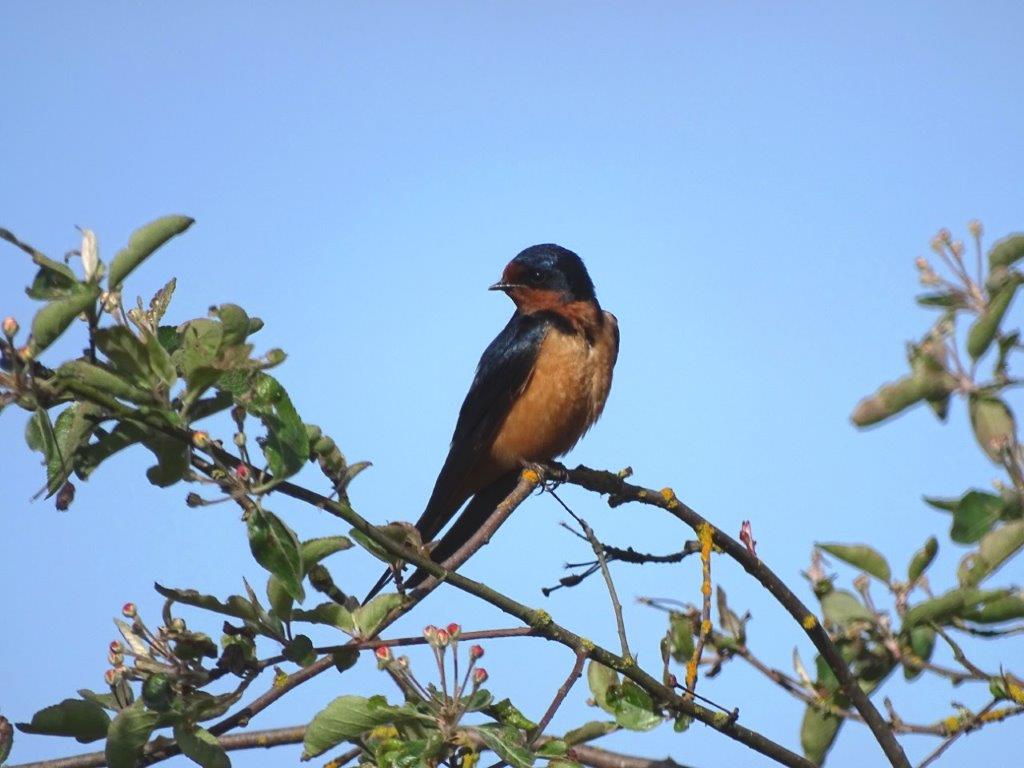By Pete Davidson, Senior Conservation Advisor, Birds Canada and COSEWIC Birds Specialist Sub-Committee Member; and Dr. Richard D. Elliot and Dr. Marcel H. Gahbauer, Co-Chairs of COSEWIC Birds Specialist Sub-Committee
Twice a year, the independent Committee on the Status of Endangered Wildlife in Canada (COSEWIC) makes recommendations that the federal government uses to consider species’ legal protections under the Species at Risk Act. Birds Canada volunteers are at the foundation of this process.
“Citizen Science observers across the continent are fundamentally important in determining population trends for many species”, commented Richard Elliot, “we couldn’t do this without you.”
There are seven COSEWIC status categories: Extinct, Extirpated (no longer exists in the wild in Canada, but still exists elsewhere), Endangered, Threatened, Special Concern, Data Deficient (meaning not enough information is available to assess the species), and Not at Risk. In May 2021, 26 species or discrete populations of wildlife were assessed, including five birds. This batch includes the usual indications of grave concern, but also room for a little cautious optimism.

Ross’s Gull Photo: Lev Frid
The dainty, diminutive Ross’s Gull, with its soft pink, grey, and powder-white adult plumage, is among the most beautiful of seabirds. It is a rare treat to see one, and unfortunately, the likelihood of that happening in Canada is lessening. COSEWIC assessed Ross’s Gull as Endangered, two categories higher than 25 years ago. Fewer than 20 individuals are now known to breed in Canada, and no chicks have fledged in 14 years from Canada’s only known colony in the High Arctic. Canadian Low Arctic nest sites have been abandoned since the species was last assessed (as Threatened) in 2007. Major threats include chick mortality caused by Arctic Terns, and contamination from airborne toxic chemicals. Effects of climatic change are largely unknown. Almost all of the global population of Ross’s Gull breeds in northeast Siberia, and at the global level, the species is assessed by BirdLife International as Least Concern: a silver lining, and, it is possible that small numbers may occur undetected in the Canadian High Arctic.

Short-eared Owl Photo: Brendan Kelly
Short-eared Owl is one of the world’s most widespread owls. Active day and night, this nomadic, ground-nesting species breeds in open habitats in all Canadian provinces and territories. Citizen Science data underpin this species assessment. New population estimates derived from Breeding Bird Atlas data suggest that the Canadian population is approximately 31,000 mature individuals, which is only about 10% of previous estimates. A decline of more than 30% over the past three generations is inferred from data from the Breeding Bird Survey and Christmas Bird Counts. It is consequently designated Threatened; previous assessments in 1994 and 2008 categorized it as Special Concern. Continuing declines are projected due to ongoing loss of nesting and wintering habitat from crop conversion, agricultural intensification, urbanization, and invasive plants, and, in low Arctic habitats, climate-driven increases in shrub growth will further reduce prey availability and increase predation risk.

Band-tailed Pigeon Photo: Ayman Rizk
The fruit-eating, woodland–dwelling Band-tailed Pigeon of southwestern British Columbia still qualifies as Special Concern, as it did in 2008. However, Canadian birds are losing breeding habitat to forest harvest and urbanization, with the Breeding Bird Survey showing a continuing long-term decline of 11% in three generations. Species-specific surveys at sites where these birds congregate to consume mineral-rich water or soil suggest localized declines of about 40% in three generations. Most Canadian birds winter in the western United States where they are exposed to habitat loss, hunting, and a prevalent, parasite-caused disease. So the Band-tailed Pigeon may soon qualify for Threatened unless these threats can be mitigated.

Barn Swallow Photo: Graham Sorenson
Encouraging news concerns a public favourite, and one of the world’s most widespread birds, the Barn Swallow. Readers will be pleased to learn that the substantial decline over two decades (starting in the late 1980s) prompting its designation as Threatened in 2008 has stabilized over the past ten years. Ongoing declines in some provinces are offset by a substantial increase in Saskatchewan, warranting its re-designation as Special Concern. Although the Canadian population remains large, estimated at 6.4 million mature birds, it may once again become Threatened if threats continue or worsen.

Ferruginous Hawk Photo: Yousif Attia
The striking Ferruginous Hawk is the only bird of prey confined to the grasslands of the North American Great Plains. Population trends in the Canadian range of southern Alberta, Saskatchewan, and far southwest Manitoba have been stable or even slightly increasing over the past three generations, prompting a reclassification from Threatened to Special Concern. This hawk’s history of classification has seen it bounce between Threatened and Special Concern since initial designation as Threatened in 1980. This latest designation recognizes that the species may become Threatened again in the absence of effective management of ongoing loss of foraging and nesting habitats from threats such as displacement by energy production, increased competition, disturbance at nest sites, and persecution of prey.
For more on the COSEWIC process, see this blog post by Birds Canada’s retired Director of National Programs and a former Co-Chair of COSEWIC’s Birds Specialist Sub-Committee, Jon McCracken.
